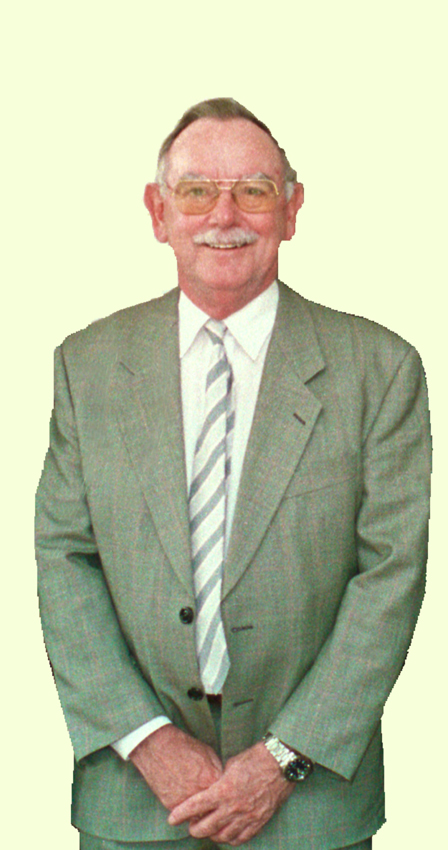James V. Allaby (1936-2009)


It was with shock and sorrow that we heard Jim Allaby passed away on 7 April. Jim was born in Preston, England, in October 1936. After obtaining a first degree in physics at King’s College, London, he moved to Liverpool to study for his PhD at the university’s synchrocyclotron. This was his first proton-proton scattering experiment, and was also the start of a lifelong friendship with Bert Diddens, who was there as a CERN fellow.
In the early 1960s Jim moved to SLAC where he worked with Dave Ritson on electron inelastic scatterings. Ritson greatly appreciated Jim’s calm and systematic approach to any kind of problem he was confronted with. Thus it was natural for Jim to visit SLAC later and for Ritson to join the DELPHI Collaboration in the 1990s.
Jim came to CERN in the summer of 1965. He joined the CERN group of Giuseppe Cocconi, Bert Diddens and Alan Wetherell, who were preparing proton-proton scattering experiments, in a slowly extracted proton beam, at the highest PS energies. This led to the discovery of structures in large-angle scattering and the "black disc" behaviour of elastic scattering. Jim had a very good command of the English language and was the careful editor of the relevant publications, as for many later experiments.
In 1968 a CERN group - formed around Alan, Bert and Jim – initiated a collaboration to study particle production and the total hadron-hadron cross section at the new 70 GeV Serpukhov accelerator. Jim took this mission very seriously and learned Russian, much better than the others. The bureaucracy was tough; the people in Protvino were not allowed any non-professional contact with the CERN team, but Jim excelled in overcoming this, thanks to his character, social skills and knowledge of the language.
Jim’s role in the development of relations with Eastern Europe continued during the time of the SPS, when he served on the Joint Scientific Committee for the cooperation between CERN and IHEP. Later he was co-chairman on a similar committee for cooperation between CERN and JINR.
In 1970 the CERN group joined the Rome-ISS (Istituto Superiore di Sanità) group who had proposed measuring small-angle elastic scattering at the nearly-completed Intersecting Storage Rings using the technique that became known as "Roman pots". Jim participated in the initial phase of the experiment, which brought several discoveries including the rising proton-proton cross-section. However, he was becoming more involved in serving the physics community, as PS Coordinator in 1970 and later as a member of the team preparing the SPS experimental programme. John Adams then appointed him as Physics Coordinator for this programme, working in close collaboration with the Experimental Areas Groups, in charge of designing the areas and the beams. This fruitful cooperation led to the construction of the initial compliment of beams with all the required particle detection and identification devices. This was an activity in which Jim displayed his very special qualities as someone always ready to serve his community by implementing his own vision, but capable of making reasonable compromises and decisions without upsetting his partners.
Jim’s own interest at the SPS was in studies of the neutrino neutral-current interactions performed by the CERN-Hamburg-Amsterdam-Rome-Moscow (CHARM) Collaboration. This included tests of the nature of the charged-current interactions, which were based on the measurement of the polarization of the muons produced upstream in the iron calorimeter of the CDHS experiment. This required transforming CHARM’s 400 tonne marble calorimeter into a muon polarimeter. Jim was very active in the construction of the detector and, in particular, in this transformation.
At the end of the 1970s Jim became one of the founding fathers of the DELPHI experiment. He played an important role in the genesis of the RICH detector during the phase that led from the initial spherical detector to the final cylindrical design. DELPHI was the first collaboration to form an interdivisional group at CERN and to separate the responsibilities of the leader of the "CERN team" from the ones of the spokesman. Jim covered the role of Team Leader for many years with his usual dedication, efficiency and friendly style of management. In parallel he led the DELPHI Data Acquisition Project from the design to the implementation phase in 1989.
Jim was nominated Division Leader when Carlo Rubbia was CERN Director General and in this role continued strong support for the LEP programme. He was also put in charge of relations with the CERN non-Member States.
After completing his term as Division Leader, Jim joined the L3 Collaboration at LEP. He made important contributions to many of the publications of L3 and was chairman of the L3 Publication Board. After L3, he worked on the AMS Experiment, participating in the preparations for the AMS first shuttle flight and for the AMS mission on the International Space Station.
After retirement Jim became a member of the Committee of the CERN-ESO Pensioner’s Association (GAC-EPA), once more in a spirit of service to the community of the CERN pensioners and their family members.
We share our sorrow with his family and we convey our deepest condolences and sympathy to Jean and Mark.
His colleagues and friends
Jean and Mark Allaby would like to thank everyone who attended Jim’s funeral. They express their gratitude for the many kind messages, cards of condolence and generous donations to Cancer Research.

